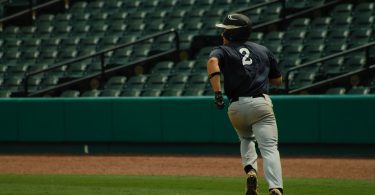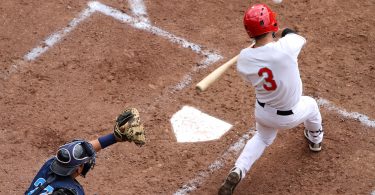Eric Thames had an April to remember. 24 games, .345 AVG, 28 R, 11HR, 19RBI, 1.276 OPS. Anyone would take those numbers over a month-long span, Babe Ruth included! What if we told you that you could be more like Thames? Okay, maybe we can’t guarantee those numbers, after all Thames is physical and has a Big League skill set. But Thames’ most revealing numbers are ones that you won’t see on the back of his baseball card. In fact, it’s a skill that you can master as well, regardless of your physical tools. We are talking about improving your plate discipline and pitch selection. Something the 2017 Thames has been doing far better than the last time he graced an MLB roster.
As this Fangraphs article by Jeff Sullivan notes, in the first 206 pitches Thames saw, 103 were balls. Of the 103 pitches that were not in the strike-zone, Thames only swung at 16 of them. That is the 3rd lowest swing rate on pitches out of the zone at the time that article went to print. Pretty impressive. So what exactly does that mean in the larger picture of offensive production?
You’ve seen what it’s meant to Thames, but in general, improved plate discipline translates to hitting the ball harder more consistently. Being patient enough to wait for a pitch you can handle forces pitchers to throw in the strike zone and beat you with their stuff. It also allows a hitter to see more pitches, get on base more consistently, and strike out less. Plate discipline is a sign of maturity and understanding in the box, a trait that college coaches love.
Plate discipline goes beyond swinging at strikes and taking balls. It also doesn’t mean that you are passive at the plate. It has to do with swinging at pitches you are looking for and that you can hit hard at a high rate. It’s a skill that helps distinguish between a batter and a hitter. A batter has an approach and a plan that changes from pitch-to-pitch and situation-to-situation. Batters understand that there are ways to help generate offense beyond trying to get a hit on every pitch. A lineup of batters is much more consistent than a lineup of hitters. Hitters are streaky—on a constant roller-coaster. When you rely on getting a hit every AB, you are likely to expand the zone, start pressing when the results aren’t coming, and be at the mercy of the pitcher. When a player swings at pitches he can hit hard on a regular basis and lays off pitches that hitters get themselves out on, he no longer relies on pitchers to make mistakes to be successful.
So how can you improve your plate discipline and turn yourself into a batter that is a true offensive weapon? Start by understanding which pitches you hit well and which you don’t. Practice working in certain hitting zones during BP and drill work. For example, take inside strikes and swing at strikes on the outer half. Then switch. Or do the same on pitches up and down. Always provide context and situation for your swings. Next, watch the game closely. Pitchers have tendencies and patterns. If you watch every hitter during the game intently, you will gain a lot of information and be able to make much more educated/accurate guesses on what pitch is coming in a given count or situation. This will allow you to sit on a pitch or a speed during leverage counts. Another thing to do is train your eyes like you do your swing! Find ways to get as many visual reps as possible. Stand in on bullpens. Look into vision strengthening games and exercises. Finally, become a student of the game. The more you learn about approach and plate discipline, and the better you understand which pitches you hit well, the tougher out you will become. Not only will these skills turn you into the batter that college coaches want, your team’s offense will benefit immensely as well.






